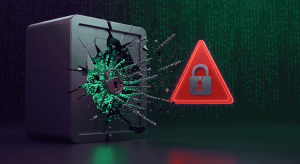On 20 June 2025, the internet was rocked by a massive password leak that compromised millions of user accounts worldwide. From banking apps to social media platforms, sensitive data is now at risk — and if you’re reading this, it’s time to act fast.
This post will guide you through everything you need to know about the password leak 2025 and how to secure your online presence immediately.
🕵️♂️ What Happened on June 20, 2025?
A hacker group released a 9.8 billion-entry password database online, compiled from both newly stolen credentials and older leaks. The database includes:
-
Email addresses
-
Plaintext passwords
-
Social media logins
-
Banking-related credentials
This breach, now referred to as the RockYou2025 Mega Leak, is being described as the largest password breach in history.
🚨 Affected Platforms Include:
-
Facebook & Instagram
-
Gmail & Outlook
-
Netflix & Spotify
-
Online banking & payment apps
If you have accounts on these platforms, you may be affected.
20 Trending Blog Niches to Start in 2025 (With Low Competition)
🔍 How to Know If Your Password Was Leaked
Use any of the following trusted tools to check your email or phone number:
| Tool | Website |
|---|---|
| Have I Been Pwned | https://haveibeenpwned.com |
| Firefox Monitor | https://monitor.firefox.com |
| Google Password Checkup | Chrome Settings > Password Manager |
🛡️ 7 Steps to Protect Your Accounts Now
1. Change All Compromised Passwords
Change any password that is:
-
Reused across platforms
-
Easy to guess (e.g., 123456, password, qwerty)
-
Over a year old
Use a secure password that’s 12+ characters long and includes symbols, numbers, and letters.
2. Enable Two-Factor Authentication (2FA)
This adds an extra layer of account protection, even if your password is leaked. Use:
-
Google Authenticator
-
Authy
- SMS-based codes (less secure but better than nothing)
3. Use a Password Manager
Let a trusted password manager generate and store complex passwords.
| Manager | Pros | Free Option |
|---|---|---|
| Bitwarden | Open source, browser integration | ✅ |
| 1Password | User-friendly, syncs devices | ❌ |
| NordPass | Auto-fill, encrypted vault | ✅ |
4. Monitor Your Accounts for Suspicious Activity
Watch out for:
-
Unusual login locations
-
Password reset attempts
-
Unrecognized devices or app authorizations
5. Avoid Public Wi-Fi Without a VPN
Hackers often snoop on open networks. Always use a VPN when connecting through public hotspots.
6. Don’t Click on Suspicious Links
After leaks, phishing scams increase. Emails pretending to be from Google, Netflix, or banks may lure you to enter your login again — don’t fall for it!
AI Tools 2025 – What’s New Today?
7. Update Security Questions
If your security question answers were leaked (like “mother’s maiden name”), change them or use made-up answers only you would know.
🔄 Long-Term Cybersecurity Tips
To improve your online security beyond this leak:
-
Perform a monthly password audit
-
Keep software and devices up to date
-
Use different emails for important and casual services
-
Regularly back up your data
❓ Frequently Asked Questions (FAQ)
Q1: What is the June 2025 password leak?
Answer: The password leak 2025 refers to a massive dump of nearly 10 billion credentials released online on 20 June 2025. It’s being called the largest data breach of the decade.
Q2: How can I check if I was affected?
Answer: You can use websites like HaveIBeenPwned or Firefox Monitor by entering your email. These tools scan known breach databases to alert you.
Q3: Is using a password manager safe?
Answer: Yes. Trusted password managers use strong encryption to store your credentials securely. They reduce the risk of password reuse and generate secure passwords automatically.
📣 Stay Safe and Secure Your Digital Life Today
The password leak of June 2025 is a wake-up call for everyone. Don’t wait until it’s too late.











